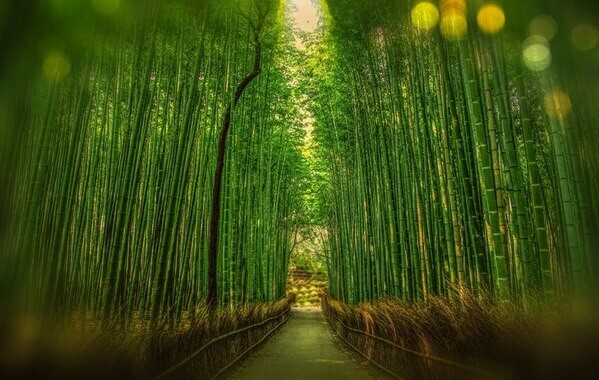Top 6 Environmental Benefits of Bamboo Flooring
Most people nowadays are trying to live greener lives because they are concerned about the future of our planet. It means they’ll focus on the sustainability of the products they buy for their house, from energy-saving electronics to pleather sofas to bamboo flooring.
1. Bamboo restores degraded lands
In many countries around the world, soil is damaged by poor agricultural practices, including overgrazing. This means that nothing can be grown in the area for years afterwards, negatively affecting crop production and, therefore, the food chain.
Bamboo is unique because it can not only be grown in damaged soil, but it can actually rejuvenate the earth itself. Bamboo leaves, which contain important nutrients, drop onto the ground whilst growing and during harvest. As these leaves decompose, they improve topsoil quality and create healthy agricultural lands for the future.
Bamboo can even remove toxins from contaminated soil! Talk about a super plant.


2. Bamboo grows hecka fast
Unlike hardwood trees, which can take 60+ years to reach full maturity, bamboo grows like nobody’s business. Some varieties can reach full maturity in just 90 days, something rarely seen outside of movie characters that have to contend with an unexpected pregnancy, and the type used to make bamboo floors will be ready to harvest after just five years.
Plus, bamboo will actually provide a massive 20 times more timber than trees over the same area size and time span.
3. Bamboo breathes easier than hardwoods
One of the things that we learnt in science class is that plants are the lungs of the earth, inhaling carbon dioxide and exhaling oxygen, helping to make the planet safe for all other organisms.
Bamboo is literally a breath of fresh air, taking in more CO2 (12 tons per hectare) and producing 35% more oxygen than a hardwood tree.


4. Bamboo requires no pesticides to help it grow
Like all the best athletes, bamboo got the top without any chemical help. They can grow to heights of 50ft within five years, completely naturally.
Fewer pesticides means cleaner air, richer soil, and healthier animal and insect populations.
5. Bamboo harvesting is done by hand
It would be nearly impossible to fell an Oak or a Redwood by hand (not to mention dangerous!), so most logging companies rely on heavy machinery, which pollutes the earth with CO2, while removing our best defense against it.
Bamboo is harvested by hand, so the only way that it could introduce additional methane into the air is if the harvester had beans for lunch. So, bamboo has a much smaller carbon footprint than wood.


6. Bamboo does not contribute to deforestation
When a hardwood tree is harvested, the whole tree, which may have been there for up to 100 years, has to be cut down and uprooted. This can negatively affect the insects or animals living in the area, cause soil erosion, and degrade forestlands.
While logging companies will often plant another tree to replace it, this will take a lifetime to grow and won’t stop the current dangers.
Bamboo, on the other hand, is a grass and can regenerate without replanting. This means that it can be harvested multiple times from the same stalk without disturbing the topsoil or causing any loss in quality.
It’s like how your lawn keeps growing, even though you got it to the perfect 2.5 inches last week, but more helpful.
As there is no uprooting, there is no soil erosion, which means that bamboo can:
- Stabilize watersheds (the land area that drains into a body of water)
- Improve water quality, by not letting soil fall into the water
- Prevent mudslides, which are caused by soil erosion
How to make sure your bamboo flooring is the most eco-friendly available
Make sure to choose a brand that only harvests bamboo plants aged 5-7 years.
Younger plants will be weaker and older ones will be more brittle. Therefore, they’ll be less likely to survive being processed into flooring planks (what a waste of natural resources) and if they do make it to your house, they may not stand the test of time (costing you more money).


Industry Certifications
The flooring industry knows that sustainability is a major concern for many customers and so they have created special certificates for products that have higher indoor air quality, lower emissions, and are otherwise greener.
These certifications include:
- The Resilient Floor Covering Institute’s FloorScore
- USDA FloorScore
- Greenguard Gold
Focus on air quality
We’re rightly concerned about air quality outside of our homes (which is why ownership of hybrid or electric cars is on the rise), but how many of us are focused on it indoors? Well, with research showing that air can be ten times more polluted indoors due to things like mould and emissions from products, perhaps we should be.
Researchers looking at how the products we buy can affect our Indoor Environmental Quality are particularly concerned by emissions of:
- Volatile organic compounds (VOC): chemical compound particles that naturally turn in vapor over time
- Formaldehyde
Both of these will reduce indoor air quality and are hazardous to human health. There is very little data about the emissions of VOC or formaldehyde from bamboo flooring material, but better safe than sorry.
All bamboo products should meet the strict European E1 standards for indoor air quality at the very minimum, but VOC and formaldehyde emissions vary from brand to brand. For instance, some bamboo flooring products will use formaldehyde-based adhesives in the manufacturing process, while some report using only formaldehyde-free glues and finishes.
So seek out low VOC products for your house, particularly if you have young children, elderly people, those with breathing problems, or someone with a compromised immune system living with you.
